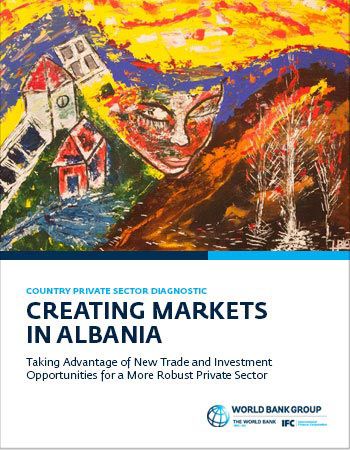Taking Advantage of New Trade and Investment Opportunities for a More Robust Private Sector
Albania ― a small economy endowed with considerable natural assets and a key geographical location ― has made major strides in raising per capita income and integrating into the world economy. In the 2000s, strong and sustained gross domestic product (GDP) growth enabled Albania to become an upper-middle-income country. A dynamic private sector has been the engine of the country’s economic growth and trade integration with global and European markets. However, over the last decade, total factor productivity growth has been weak and, coupled with a fairly undiversified export base, has left the economy highly vulnerable to external shocks and unable to sustain a higher GDP growth path.
Recognizing that improving firm-level productivity is the country’s core economic policy challenge, the Country Private Sector Diagnostic of Albania underlines the importance of improving the business environment while stepping up firms’ managerial and innovation capabilities. The CPSD identifies opportunities for private-sector-led growth in agribusiness, tourism, and automotive manufacturing ― sectors with substantial potential for export diversification, integration to regional value chains, productivity enhancements, and employment generation. Increasing value addition and raising the quality of agricultural output to the standards of European markets would contribute to export diversification. While the tourism sector presents especially attractive opportunities for both growth and diversification, realizing its potential will require addressing the excessive concentration of tourism facilities, the sector’s ecologically unsustainable development, and its focus on low-value market segments. Finally, supporting the development of the emerging auto-parts industry and deepening Albania’s integration into the European automotive value chain could catalyze job creation by fostering the development of a dynamic, globally competitive manufacturing sector.
